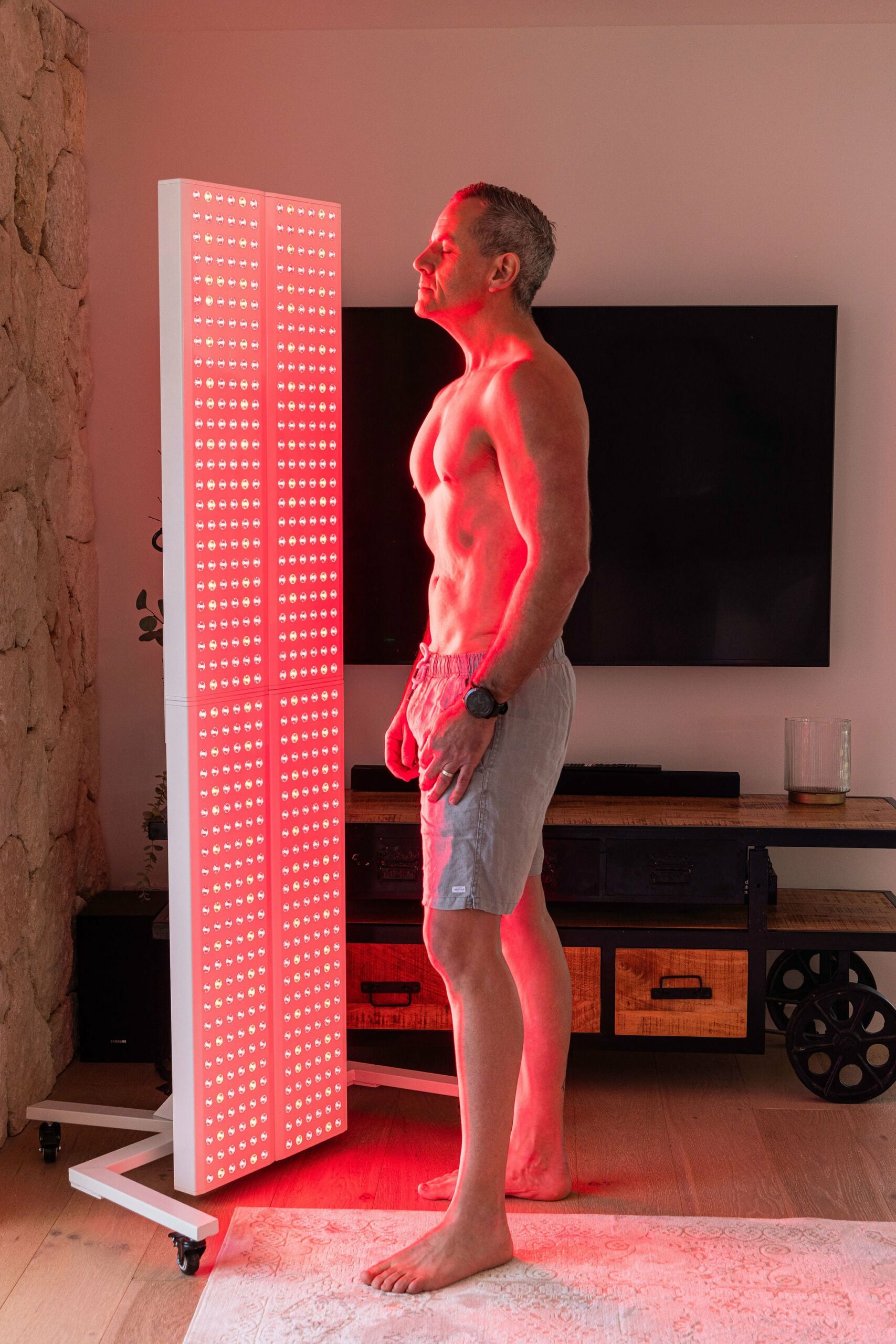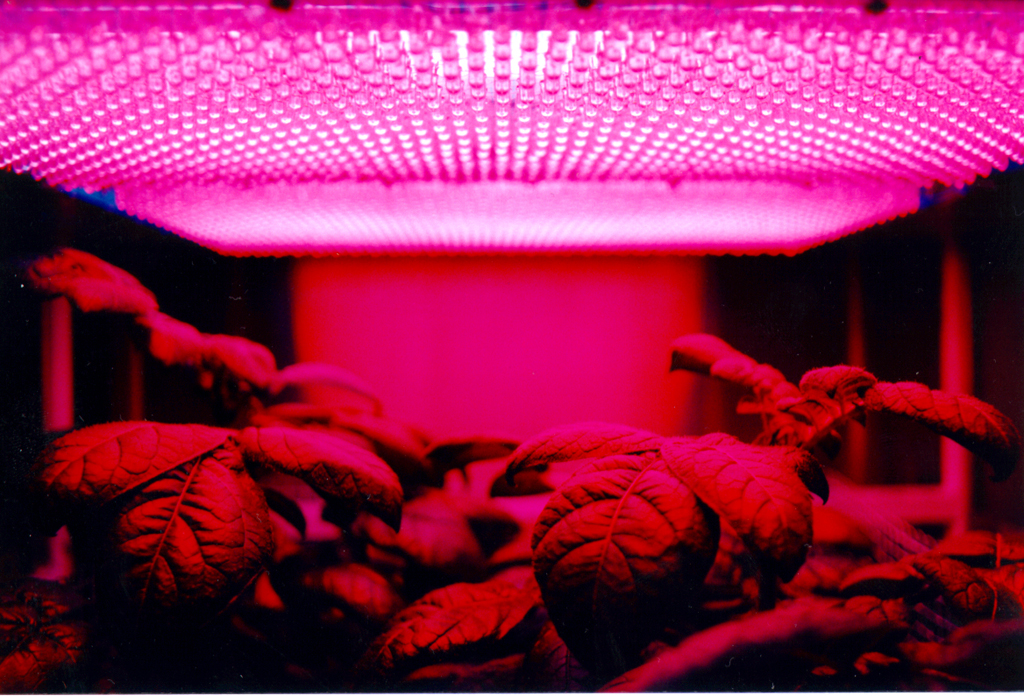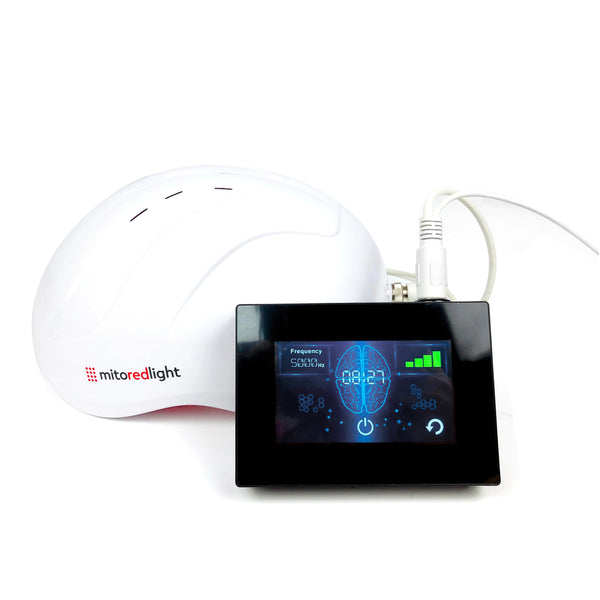Discover the Transformative Potential of the MitoMIND™ Helmet!
Introducing the MitoMIND™ Helmet, a revolutionary brand new product launched summer of 2023 designed for optimizing brain function and enhancing your well-being. Manufactured by a company deeply committed to advancing excellence and quality, this state-of-the-art helmet employs 256 LEDs operating at an 810nm wavelength to deliver transcranial photobiomodulation therapy right in the comfort of your home.
The helmet uses advanced red light therapy technology to revitalize your brain, sharpening your mental clarity and boosting your cognitive performance. The strategically designed near-infrared light promotes cellular energy production and contributes to overall brain health. Tailored for comfort, its ergonomic structure and adjustable features ensure an enjoyable and rejuvenating experience during each session.
Pre-configured Programs for Optimal Benefits:
The MitoMIND™ Helmet offers six pre-configured programs designed for various mental states and activities. Each program has specific settings for frequency (Hz), power level, and duration:
- Recharge: 10 minutes at 0Hz and full power
- Sleep: 15 minutes at 2Hz and half power
- Meditate: 15 minutes at 5Hz and half power
- Relax: 15 minutes at 10Hz and three-quarters power
- Concentrate: 12 minutes at 16Hz and three-quarters power
- Peak Focus: 6 minutes at 40Hz and full power
These programs are expertly calibrated to offer you maximum benefits for recharging, sleeping, meditating, relaxing, concentrating, and achieving peak focus.
Customizable and Intelligent Settings for Flexible Use
The MitoMIND™ Helmet is not just a one-size-fits-all solution. It offers a high degree of flexibility through its customizable settings, allowing you to tailor the time, pulse rate, and intensity to meet your unique needs.
Additionally, its advanced software mirrors the adaptability of the human mind by letting you choose frequency settings that correspond to particular brain wave patterns. Unlock your full cognitive potential and reach peak performance with this versatile and cutting-edge tool for the modern mind.
Good For:
MitoMIND™ Red Light Therapy Helmet: How Does it Rate?
Pros
- Cutting-Edge Technology: Utilizes advanced red light therapy and transcranial photobiomodulation to enhance cognitive function and well-being.
- Highly Customizable: Allows for personal customization to suit your needs.
- User-Friendly: Comes with six pre-configured programs to make it easy for users to select the setting that best suits their current mental state or activity.
- Comfort-First Design: Ergonomically designed with an adjustable fit to provide a comfortable and enjoyable experience.
- Intelligent Software: Advanced software lets you align the frequency settings with specific brain wave patterns for optimized results.
- Convenience: Offers the ability to enhance brain performance and overall well-being in the comfort of your home.
- High-Quality Manufacturing: Created by a company committed to excellence, quality, and advancements in technology.
- Quick Sessions: Even the longest preset program lasts only 15 minutes
- Holistic Benefits: Not just for cognitive function, it offers potential improvements in mood, sleep quality, and overall mental well-being.
- Scientifically Backed: The technology behind the helmet is supported by various scientific studies.
- Portable: Its sleek and lightweight design makes it easy to take with you
- Safety Features: Built-in safety measures to ensure that the device operates within safe parameters.
- Future-Proof: Regular software updates ensure that the helmet stays up-to-date with the latest advancements in brain health and light therapy.
Cons
- Cost: The advanced technology and features come with a high price tag, it may be inaccessible for some users.
- Learning Curve: It may take time for users to fully understand how to optimize these for their individual needs.
- Limited Research: The field of transcranial photobiomodulation is still relatively new and may not be universally accepted.
- Not for Everyone: Certain medical conditions or sensitivities to light make the device unsuitable for some individuals.
- Time Commitment: Although sessions are generally short, optimal results may require a consistent and ongoing time commitment.
About the Brand
Mito Red Light stands out as a premium brand in the field of light therapy, delivering high-quality, versatile products engineered with cutting-edge technology. Known for durability and effectiveness, these devices are not only used by everyday health enthusiasts but are also trusted by athletes for performance and recovery. With a focus on customer satisfaction and quality, Mito Red Light makes wellness accessible through its range of user-friendly, customizable options.
What Are the Benefits of MitoMIND™ Red Light Therapy Helmet and How Does it Work?
Brain health is an area of vital concern, given the complexities and importance of this organ in our daily lives. A healthy brain not only drives our cognitive functions but also influences our emotions, reactions, and overall well-being. Red light therapy, alternatively called photobiomodulation or low-level laser therapy, is gaining traction for enhancing and restoring brain health.
The therapy focuses on subjecting tissues to particular red or infrared light wavelengths. These are absorbed by the mitochondria, cells' energy producers, improving their function. This, in turn, invigorates neurons and encourages both new nerve cell growth and synaptic flexibility, potentially providing protective advantages for the brain. Some of the potential benefits include:
Cognitive Enhancement
- Improved Memory: Red light therapy may help in enhancing memory retention and recall.
- Increased Focus and Attention: Preliminary research suggests that red light therapy could improve attention span and help with better concentration.
- Enhanced Problem-Solving Skills: Improved neural connectivity and energy production could potentially make problem-solving tasks easier.
Emotional Well-Being
- Mood Stabilization: Red light therapy has been studied for its potential to improve emotional well-being and mood by possibly balancing serotonin and endorphin levels.
- Reduced Anxiety: Some users report a calming effect, although more research is needed to confirm these claims.
General Mental Wellness
- Increased Resilience to Stress: By potentially enhancing the overall functioning of brain cells, red light therapy might make individuals more resilient to stress.
- Improved Sleep Quality: Some studies suggest that red light therapy could help regulate circadian rhythms, contributing to better sleep quality which is vital for cognitive functions.
Numerous studies have highlighted the potential of Red Light Therapy (RLT) not only as an avenue for optimizing brain health but also as an effective treatment for a range of brain conditions. These include Alzheimer's Disease, Parkinson's Disease, stroke, traumatic brain injuries, autism and more.
A study published in 2016 by Michael R. Hamblin in BBA Clinical highlights the potential of NIR light to treat traumatic (stroke, TBI) and neurodegenerative and psychiatric diseases
Thanks to a growing body of research the the potential benefits of red light therapy (RLT) for these conditions are becoming increasingly evident:
Potential benefits of red light therapy (RLT) for traumatic brain injury (TBI)
The efficacy of Red Light Therapy (RLT) in treating Traumatic Brain Injury (TBI) is backed by growing scientific evidence. Key potential benefits include:
- Improved Cognition: Research, including studies by the U.S. Department of Veterans Affairs, indicates red light therapy may enhance cognitive functions such as memory, attention, and problem-solving in TBI patients.
- Accelerated Healing & Neuronal Repair: By boosting mitochondrial activity, red light therapy could speed up tissue repair and facilitate the healing of damaged neuronal pathways.
- Emotional Well-Being Enhancement: The treatment may improve mood disorders like depression and anxiety, which are common in TBI cases.
- Anti-Inflammatory Benefits: Red light therapy's anti-inflammatory properties may help alleviate brain inflammation that worsens TBI symptoms.
- Increased Blood Circulation: Improved blood flow is another potential benefit, aiding the healing process.
- Expanded Treatment Window: Studies suggest the therapy could be effective even years after a TBI, widening long-term treatment options.
- Safety & Non-Invasiveness: The non-invasive and safe nature of red light therapy allows it to be easily incorporated into various care plans.
A comparative study in 2014 published in Plos One Journal by Marcus K Giacci et al showed the therapy’s potential to help repair damaged optic nerves and protect neurons.
That same year, one other study published in the Journal of Neurotrauma confirmed the positive effects of red light therapy in treating patients with chronic, mild traumatic brain injury.
The area of red light therapy for cognitive applications has even received increased attention from governmental organizations. In 2014, the U.S. Department of Veterans Affairs (VA) studied red light therapy's effects on cognitive function in traumatic brain injury patients.
Due to encouraging results, in 2015 the VA launched four more studies, mainly targeting combat-related brain injuries which showed the very positive benefits of the technology.
In 2018, a study published in Photomedicine and Laser Surgery by S Gregory Hipskind et al, found that red light therapy notably improved neuropsychological scores in chronic mild traumatic brain injury patients, suggesting its efficacy even years post-injury.
Potential benefits of red light therapy (RLT) for stroke patients
Red light therapy has shown promise in treating stroke patients by offering a range of potential benefits, although more research is needed:
- Neuroprotection: Studies suggest that red light therapy can reduce the size of the infarct (the area of dead tissue following a stroke) and protect the surrounding neurons from further damage.
- Improved Cognitive Function: Some studies indicate that red light therapy may enhance cognitive function by stimulating mitochondrial activity, which, in turn, improves neuronal health.
- Promotion of Neurogenesis and Synaptic Plasticity: The therapy is believed to stimulate the growth of new neurons and promote synaptic connections, thereby potentially aiding in the recovery of skills and functions lost due to the stroke.
- Anti-Inflammatory Effects: Red light therapy has been found to reduce inflammation, a critical factor in stroke-induced brain injury.
- Enhanced Blood Flow: Improved microcirculation in the affected areas can help deliver essential nutrients and oxygen, speeding up the healing process.
- Safety and Non-Invasiveness: One of the appeals of red light therapy is that it is non-invasive and has a good safety profile, making it a potential adjunct therapy alongside more traditional treatments.
- Pain Relief: Some evidence suggests that red light therapy can alleviate pain, a common post-stroke symptom, by reducing inflammation and promoting healing.
- Improved Mood: The treatment has also been suggested to help alleviate symptoms of depression and anxiety that often accompany a stroke, though more research is needed in this area.
One of the early landmark studies on the potential applications of red light therapy was published in 2007 by Yair Lampl et al in “Stroke,” a journal maintained by the American Heart Association. It found that infrared light was effective and safe for treating ischemic strokes.
Various further studies including one published in the Journal of Neuroscience Research by Michael R. Hamblin highlight the positive effects of the therapy on restoring brain function following a stroke.
A comprehensive literature review in 2020, published in Neural Regeneration Research by Muyue Yang et al, found preliminary evidence supporting red light therapy's efficacy in treating a variety of central nervous system diseases, including stroke and traumatic brain injury, calling for larger studies for optimization.
Potential benefits of red light therapy (RLT) for neurological disorders such as Alzheimer's and Parkinson's
- Neuroprotection: Red light therapy has been shown to have neuroprotective effects that may slow the progression of diseases like Alzheimer’s and Parkinson's.
- Enhanced Cognitive Function: Studies have indicated that red light therapy can improve cognitive functions, helping to combat some of the mental declines associated with neurodegenerative diseases.
- Reduced Inflammation: Chronic inflammation is a known contributor to neurodegenerative diseases. Red light therapy has anti-inflammatory effects that could be beneficial in this context.
- Stimulation of Neurogenesis: Some studies suggest that red light therapy could stimulate the growth of new neural cells, offering the potential for partially reversing degenerative conditions.
- Improved Quality of Life: By addressing symptoms like sleep problems, mood imbalances, and cognitive decline, red light therapy could significantly improve the quality of life for individuals with neurodegenerative diseases.
In recent years, multiple studies have been published, highlighting the potential of red light therapy as a novel treatment for neurological disorders, such as Alzheimer's and Parkinson's Disease:
A 2020 study design paper in Frontiers in Aging Neuroscience by Nayan Huang et al, set the stage for researching red light therapy's impact on mild to moderate Alzheimer's. While it didn't present results, it laid the foundation for ongoing research.
A separate study, also published in 2020 in Frontiers in Aging and Neuroscience by Aaron Song Chuan Foo and others, reviewed literature supporting red light therapy for Parkinson's Disease. It suggested red light therapy could slow neurodegeneration and even discussed the idea of implantable delivery devices.
Potential benefits of red light therapy (RLT) Autism and neurodegenerative diseases
Red light therapy (RLT) has also been garnering attention as a potentially effective treatment for autism among other neurodegenerative diseases. Below are some of the potential benefits
- Improved Social Interaction: Some studies have reported that red light therapy can improve social behaviors, one of the core symptoms of autism spectrum disorder.
- Enhanced Cognitive Function: Red light therapy aims to stimulate cellular activity, particularly in the mitochondria. Improved mitochondrial function could lead to better cognitive performance.
- Reduced Anxiety and Irritability: Red light therapy has been associated with mood enhancement and could potentially alleviate symptoms of anxiety and irritability commonly observed in individuals with autism.
- Safety and Non-Invasiveness: Unlike some other treatments for autism, red light therapy is non-invasive and has a strong safety profile, making it a good option for long-term treatment.
In 2022, a Study published in Neurology International by Australian researchers Catherine Hamilton et al stated: ” Recently, photobiomodulation has been shown to improve, for example in many animal models of Alzheimer’s to Parkinson’s disease, some of the key alterations of brain function and microbiome composition that are also found in autism..” They praised the treatment's safety profile and called for large-scale clinical trials.
Another 2022 study published in Frontiers in Pharmacology by Damir Nizamutdinov et al, extensively reviewed existing research and found that red light therapy showed much promise for treating a variety of neurodegenerative diseases. The study emphasized the therapy’s safety and convenience and called for high-quality, large placebo-controlled trials for wider adoption.
It's important to note that while these benefits are very positive and promising, more comprehensive clinical trials are necessary to determine the most effective treatment parameters in treating autism and neurodegenerative diseases.
Please refer to our Resources at the end of our Article for further extensive scientific information.
Quick Facts & Features
| Brand | Mito Red Light |
|---|---|
| Product | MitoMIND™ Red Light Therapy Helmet (Brain) |
| Form | Helmet |
| Wavelength | 810nm / Led diodes: 256pcs, diodes chip size: 14mil |
| Specification | LED Diode power: 200mW/ actual 50mW/Current :30mA |
| Safety | FDA-Cleared |
| Age | Adults |
| Skin Type | All types |
| Benefit | Brain health and brain function enhancement |
| Price | $2195 |
| Shipping | Free Shipping |
| Warranty | 2-Year Warranty |
| Purchase | Official website |
How to Use It?
Using the MitoMIND™ Helmet is a straightforward process designed for user convenience. First, place the helmet comfortably on your head, ensuring it fits snugly. Next, power on the device and select one of the six pre-configured programs—Recharge, Sleep, Meditate, Relax, Concentrate, or Peak Focus—based on your current needs.
Alternatively, you can customize the time, pulse rate, and intensity settings using the control panel. Once your preferred settings are in place, simply press ‘Start' to initiate the therapy session. The helmet will automatically shut off at the end of your chosen duration. For best results, adhere to the guidelines and recommended session lengths provided in the user manual. And that's it—you're on your way to enhanced cognitive performance and overall well-being!
Safety
When it comes to safety, the MitoMIND™ Helmet has been carefully designed to operate within secure parameters. While the field of transcranial photobiomodulation is still emerging, the MitoMIND™ Helmet is based on scientific studies that support its efficacy and safety. However, it's important to note that individuals with certain medical conditions or sensitivities to light should consult with a healthcare provider before use. Overall, the MitoMIND™ Helmet aims to offer a safe and effective way to enhance cognitive function and well-being.
Side Effects
The LED technology employed by the MitoMIND™ Helmet is energy-efficient and generates minimal heat, reducing the risk of discomfort or burns. Additionally, the device features built-in safety measures that automatically shut it off at the end of each pre-configured or customized session.
Users can confidently integrate the product into their health and wellness routine, reassured by the technology's extensive research and safety considerations.
Reviews From Users
The MitoMIND™ Helmet is a newly launched product and therefore there are no available independent user reviews as yet. We have however sifted through thousands of verified customer reviews for other Mito Red Light products, and the overwhelming majority express high satisfaction with the product's quality and effectiveness. Below is a small selection:
— Karen D.– Verified Buyer

—Timothy Slykhuis – Verified Buyer

— Gio – Verified Buyer

— Alan Buckley – Verified Buyer

Frequently Asked Questions
What is the MitoMIND™ Helmet?
The MitoMIND™ Helmet is a state-of-the-art device designed to enhance cognitive function and overall well-being through the use of red light therapy and transcranial photobiomodulation.
How do I use the MitoMIND™ Helmet?
Place the helmet on your head, power it on, and select one of the six pre-configured programs or customize your own settings. Press ‘Start' to begin the therapy session. The device will automatically shut off when the session is complete.
Is the MitoMIND™ Helmet safe to use?
Yes, the helmet has built-in safety features and utilizes energy-efficient LED technology. However, individuals with certain medical conditions or sensitivities to light should consult a healthcare provider before use.
How long does a typical session last?
Session lengths vary based on the selected program but generally range from 6 to 15 minutes.
Can I customize the settings?
Absolutely, the helmet offers customizable settings for time, pulse rate, and intensity, allowing you to tailor each session to your specific needs.
What are the pre-configured programs?
The helmet comes with six pre-configured modes: Recharge, Sleep, Meditate, Relax, Concentrate, and Peak Focus, each with its own unique settings of frequency, power level, and duration.
How often should I use the MitoMIND™ Helmet?
For best results, adhere to the guidelines and recommended session lengths provided in the user manual. The frequency of use may depend on your specific health goals.
Is it portable?
Yes, the helmet's sleek and lightweight design makes it relatively easy to carry, although some may find it a bit bulky for extended travel.
Where is the MitoMIND™ Helmet manufactured?
It is manufactured by Mito Red Light, a USA-based company committed to excellence, quality, and advancements in technology.
Are there any side effects?
While the device is generally considered safe, overuse could lead to diminishing returns or even adverse effects. If you have specific medical concerns, consult with a healthcare provider before using the helmet.
Does it require regular updates or maintenance?
The device is future-proof with the capability for software updates. As for maintenance, follow the guidelines outlined in the user manual to ensure longevity and optimal performance.
What is the return policy?
Typically, Mito Red Light offers a 60-day trial period, but it's best to check the specific terms for each product.
Conclusion
The MitoMIND™ Helmet emerges as an unparalleled innovation in the fields of cognitive enhancement and wellness. It is designed to cater to individuals seeking to improve general cognitive functions like focus, relaxation, and mental clarity, but it could also serve as a potentially valuable tool for those dealing with degenerative neurological conditions, post-stroke recovery, and brain injuries. Backed by a company steadfastly dedicated to technological advancement, quality, and excellence, this device combines the best of red light therapy and transcranial photobiomodulation to offer an extensive range of health benefits outside of a clinical setting.
The MitoMIND™ Helmet's versatile design, featuring both pre-configured and customizable settings, makes it adaptable for a wide audience—from those who are tech-savvy to those who prefer a straightforward, easy-to-use interface. Its safety features and carefully researched technology also make it a trustworthy option for at-home therapy. While there are some cons to consider, such as the initial cost and need for ongoing commitment, the multifaceted advantages of this device make it a compelling investment for anyone committed to cognitive and emotional wellness.
Whether you're a healthy individual striving for peak performance or someone navigating the complexities of neurological challenges, the MitoMIND™ Helmet seems to offer a comprehensive and user-friendly approach to improving quality of life.
Red light therapy is a type of therapy that uses red or near-infrared light to treat a variety of conditions. During a red light therapy session, a person is exposed to a specific wavelength of red or near-infrared light that is delivered through a light-emitting device. The light penetrates the skin and reaches the cells within the body with a range of therapeutic effects.

Red light is a type of visible light, Its wavelength falls between approximately 630 and 700 nanometers (nm) on the electromagnetic spectrum. Red light is often used in light therapy treatments for the skin, as it has been shown to have the most beneficial effects on skin cells and collagen production.
Near-infrared (NIR) light, on the other hand, has a longer wavelength than visible red light and falls between approximately 700 and 1200 nm on the electromagnetic spectrum. NIR light is not visible to the human eye, but it can penetrate deeper into the skin and other tissues than visible light, making it useful for a variety of therapeutic applications ranging from wound healing to inflammation reduction or improved circulation, among other benefits.
Different Red Light Therapy devices usually deliver slightly different wavelength ranges that research has shown to be the most effective for the concern they are being recommended for.
Red Light Therapy (RLT) strengthens the mitochondria, the cell’s powerhouse, where cell energy is created. Adenosine Triphosphate (ATP) is the critical energy-carrying molecule that is found in all living organisms. By optimizing the function of the mitochondria, more ATP is produced and with increased energy cells can function optimally.
This scientific breakthrough resulted in scientists discovering Red Light Therapy’s ability to stimulate and speed up tissue repair and growth. Red Light Therapy is now widely used for maintaining a healthy complexion, speeding up muscle recovery, reducing inflammation, improving sleep, treating neurological conditions, balancing hormones, treating pain, and even losing weight.
Research has also indicated that Red Light Therapy can help to restore cellular balance and alleviate the negative impact of blue light exposure. The prevalence of blue light in our society has become a growing concern as many individuals spend prolonged periods of time looking at screens on a daily basis.
Red Light Therapy (RLT) is also called:

Low-Level Light Therapy (LLLT), Photobiomodulation (PBM), Cold Laser Therapy, Photonic Stimulation, Low-Power Laser Therapy (LPLT), Phototherapy
A Brief History of Red Light Therapy
The journey of Red Light Therapy (RLT) has been both fascinating and impactful, starting from its humble origins in the late 19th century. Dr. Niels Ryberg Finsen, the pioneer in light therapy, made a groundbreaking discovery in 1896 that light could be harnessed to treat Lupus Vulgaris, a form of tuberculosis affecting the skin. His work, which led to the tangible healing of skin lesions, was so revolutionary that he received the Nobel Prize in Physiology in 1903.
Fast forward to 1960, Theodore H. Maiman invented the first operational laser, fulfilling Albert Einstein's theories on the principles of lasers laid out in 1917. This invention opened new avenues for RLT, allowing more precise applications.

NASA took an interest in Red Light Therapy in 1987, conducting experiments to examine its effects on plant growth in space missions. These studies hinted at RLT's potential to benefit not just human health but also broader ecological systems.
In the same vein, Endre Mester's work in 1967 set the stage for modern RLT applications.
His experimentation with low-level laser therapy on skin cancer effects demonstrated the technique's efficacy and led to FDA approval for wound healing in 2002.
The advent of LED technology in the 1990s was a game-changer, offering an efficient and cost-effective alternative to traditional light bulbs. This technological leap made light therapy more accessible to the general public, including its use in sports medicine where physical therapists reported quicker recovery times for sports-related injuries.

One of the most recent and exciting developments in RLT is its potential role in weight management. Studies indicate that Red Light Therapy can influence hormones like Leptin and Ghrelin, which play key roles in regulating appetite and metabolism. This makes RLT a promising avenue for non-invasive weight loss treatments.
As RLT continues to evolve, its applications keep expanding, crossing multiple disciplines from medicine to ecology. Researchers are continuously probing its potential, finding new ways to apply this age-old yet ever-advancing technology.
Our articles exclusively rely on primary sources of information, encompassing peer-reviewed medical journals and esteemed academic institutions.
- NASA. (2022, May 19). NASA Research Illuminates Medical Uses of Light. https://spinoff.nasa.gov/NASA-Research-Illuminates-Medical-Uses-of-Light
- American Association of Neurological Surgeons. (2023). Anatomy of the Brain. https://www.aans.org/en/Patients/Neurosurgical-Conditions-and-Treatments/Anatomy-of-the-Brain
- Gulati, A. (2015). Understanding neurogenesis in the adult human brain. Indian Journal of Pharmacology, 47(6), 583-584. https://doi.org/10.4103/0253-7613.169598
- Adolphs, R. (2009). The social brain: Neural basis of social knowledge. Annual Review of Psychology, 60, 693-716. https://doi.org/10.1146/annurev.psych.60.110707.163514
- Wang, Y., Pan, Y., & Li, H. (2020). What is brain health and why is it important? BMJ, 371, m3683. https://doi.org/10.1136/bmj.m3683
- Breijyeh, Z., & Karaman, R. (2020). Comprehensive review on Alzheimer’s disease: Causes and treatment. Molecules, 25(24), 5789. https://doi.org/10.3390/molecules25245789
- DeMaagd, G., & Philip, A. (2015). Parkinson’s disease and its management: Part 1: Disease entity, risk factors, pathophysiology, clinical presentation, and diagnosis. P T, 40(8), 504-510. https://www.ncbi.nlm.nih.gov/pmc/articles/PMC4517533/
- American Association of Neurological Surgeons. (2023). Parkinson’s Disease. https://www.aans.org/en/Patients/Neurosurgical-Conditions-and-Treatments/Parkinsons-Disease
- Kuriakose, D., & Xiao, Z. (2020). Pathophysiology and treatment of stroke: Present status and future perspectives. International Journal of Molecular Sciences, 21(20), 7609. https://doi.org/10.3390/ijms21207609
- Centers for Disease Control and Prevention, National Center for Injury Prevention and Control. (2023, April 20). Traumatic Brain Injury & Concussion (TBI). https://www.cdc.gov/traumaticbraininjury/get_the_facts.html
- Lacerte, M., Shapshak, A. H., & Mesfin, F. B. (2023). Hypoxic Brain Injury. StatPearls [Internet]. https://www.ncbi.nlm.nih.gov/books/NBK537310/
- World Health Organization. (2022, August 9). Optimizing brain health across the life course: WHO position paper. https://www.who.int/publications/i/item/9789240054561
- Bischof, G. N., & Park, D. C. (2015). Obesity and Aging: Consequences for Cognition, Brain Structure and Brain Function. Psychosomatic Medicine, 77(6), 697–709. https://doi.org/10.1097/PSY.0000000000000212
- Tafur, J., & Mills, P. J. (2008). Low-Intensity Light Therapy: Exploring the Role of Redox Mechanisms. Photomedicine and Laser Surgery, 26(4), 323–328. https://doi.org/10.1089/pho.2007.2184
- Wunsch, A., & Matuschka, K. (2014). A Controlled Trial to Determine the Efficacy of Red and Near-infrared Light Treatment in Patient Satisfaction, Reduction of Fine Lines, Wrinkles, Skin Roughness, and Intradermal Collagen Density Increase. Photomedicine and Laser Surgery, 32(2), 93–100. https://doi.org/10.1089/pho.2013.3616
- ampl, Y., Zivin, J. A., Fisher, M., Lew, R., Welin, L., Dahlof, B., . . . Oron, U. (2007). Infrared Laser Therapy for Ischemic Stroke: A New Treatment Strategy Results of the NeuroThera Effectiveness and Safety Trial-1 (NEST-1). Stroke, 38, 1843-1849. https://doi.org/10.1161/STROKEAHA.106.478230
- Giacci, M. K., Wheeler, L., Lovett, S., Dishington, E., Majda, B., Bartlett, C. A., . . . Fitzgerald, M. (2014). Differential Effects of 670 and 830 nm Red near Infrared Irradiation Therapy: A Comparative Study of Optic Nerve Injury, Retinal Degeneration, Traumatic Brain and Spinal Cord Injury. PLOS ONE. https://doi.org/10.1371/journal.pone.0104565
- Johnstone, D. M., Moro, C., Stone, J., Benabid, A.-L., & Mitrofanis, J. (2016). Turning On Lights to Stop Neurodegeneration: The Potential of Near Infrared Light Therapy in Alzheimer's and Parkinson's Disease. Frontiers in Neuroscience, 9, 500. https://doi.org/10.3389/fnins.2015.00500
- Naeser, M. A., Zafonte, R., Krengel, M. H., Martin, P. I., Frazier, J., Hamblin, M. R., Knight, J. A., Meehan, W. P., Baker, E. H. (2014). Significant improvements in cognitive performance post-transcranial, red/near-infrared light-emitting diode treatments in chronic, mild traumatic brain injury: open-protocol study. Journal of Neurotrauma, 31(11),1008-17. https://doi.org/10.1089/neu.2013.3244
- U.S. Department of Veterans Affairs. (2015, March 31). Can light therapy help the brain? VA study with 160 Gulf War Veterans will test red, near-infrared light. Office of Research & Development. https://www.research.va.gov/currents/spring2015/spring2015-7.cfm
- Hipskind, S. G., Grover, F. L., Fort, T. R., Helffenstein, D., Burke, T. J., Quint, S. A., Bussiere, G., Stone, M., & Hurtado, T. (2018). Pulsed Transcranial Red/Near-Infrared Light Therapy Using Light-Emitting Diodes Improves Cerebral Blood Flow and Cognitive Function in Veterans with Chronic Traumatic Brain Injury: A Case Series. Photomedicine and Laser Surgery. https://doi.org/10.1089/pho.2018.4489
- Hamblin, M. R. (2016). Shining light on the head: Photobiomodulation for brain disorders. BBA Clinical, 6, 113-124. https://doi.org/10.1016/j.bbacli.2016.09.002
- Hamblin, M. R. (2017). Photobiomodulation for traumatic brain injury and stroke. Journal of Neuroscience Research. https://doi.org/10.1002/jnr.24190
- Huang, N., Yao, D., Jiang, W., Wei, C., Li, M., Li, W., . . . Tong, Z. (2020). Safety and Efficacy of 630-nm Red Light on Cognitive Function in Older Adults With Mild to Moderate Alzheimer’s Disease: Protocol for a Randomized Controlled Study. Frontiers in Aging Neuroscience, 12, 143. https://doi.org/10.3389/fnagi.2020.00143
- Foo, A. S. C., Soong, T. W., Yeo, T. T., & Lim, K. L. (2020). Mitochondrial Dysfunction and Parkinson’s Disease—Near-Infrared Photobiomodulation as a Potential Therapeutic Strategy. Frontiers in Aging Neuroscience, 12. https://doi.org/10.3389/fnagi.2020.00089
- Yang, M., Yang, Z., Wang, P., & Sun, Z. (2020). Current application and future directions of photobiomodulation in central nervous diseases. Neural Regeneration Research. https://doi.org/10.4103/1673-5374.30048
- Liu, Y., Gong, S., Xia, S., Wang, Y., Peng, H., Shen, Y., & Liu, C. (2021). Light therapy: a new option for neurodegenerative diseases. Chinese Medical Journal, 134(6), 634-645. https://doi.org/10.1097/CM9.0000000000001301
- Hamilton, C., Liebert, A., Pang, V., Magistretti, P., & Mitrofanis, J. (2022). Lights on for autism: Exploring photobiomodulation as an effective therapeutic option. Neurology International, 14(4), 884-893. https://doi.org/10.3390/neurolint14040071
- Nizamutdinov, D., Ezeudu, C., Wu, E., Huang, J. H., & Yi, S. S. (2022). Transcranial near-infrared light in treatment of neurodegenerative diseases. Frontiers in Pharmacology, 13. https://doi.org/10.3389/fphar.2022.965788
- Torres-Martinez, N., Chabardes, S., & Mitrofanis, J. (2023). Lights for epilepsy: can photobiomodulation reduce seizures and offer neuroprotection? Neural Regeneration Research, 18(7), 1423-1426. https://doi.org/10.4103/1673-5374.360288
- Berman, M. H., Halper, J. P., Nichols, T. W., Jarrett, H., Lundy, A., & Huang, J. H. (2017). Photobiomodulation with near infrared light helmet in a pilot, placebo controlled clinical trial in dementia patients testing memory and cognition. Journal of Neurology and Neuroscience, 8(1). https://doi.org/10.21767/2171-6625.1000176
- Hu, D., Moalem-Taylor, G., & Potas, J. R. (n.d.). Red-light (670 nm) therapy reduces mechanical sensitivity and neuronal cell death, and alters glial responses following spinal cord injury in rats. Journal of Neurotrauma. https://doi.org/10.1089/neu.2020.7066
- Dmochowski, G. M., Shereen, A. D., Berisha, D., & Dmochowski, J. P. (2020). Near-infrared light increases functional connectivity with a non-thermal mechanism. Cerebral Cortex Communications, 1(1), tgaa004. https://doi.org/10.1093/texcom/tgaa004
- [34] Figueiro Longo, M. G., Tan, C. O., Chan, S., Welt, J., Avesta, A., Ratai, E., Mercaldo, N. D., Yendiki, A., Namati, J., Chico-Calero, I., Parry, B. A., Drake, L., Anderson, R., Rauch, T., Diaz-Arrastia, R., Lev, M., Lee, J., Hamblin, M., Vakoc, B., & Gupta, R. (2020). Effect of transcranial low-level light therapy vs sham therapy among patients with moderate traumatic brain injury: A randomized clinical trial. JAMA Network Open, 3(9), e2017337. https://doi.org/10.1001/jamanetworkopen.2020.17337
- Jara, C., Buendía, D., Ardiles, A., Muñoz, P., & Tapia-Rojas, C. (2021). Transcranial Red LED Therapy: A Promising Non-Invasive Treatment to Prevent Age-Related Hippocampal Memory Impairment. Hippocampus: Cytoarchitecture and Diseases. https://doi.org/10.5772/intechopen.100620
- Liebert, A., Bicknell, B., Laakso, E. L., Heller, G., Jalilitabaei, P., Tilley, S., Mitrofanis, J., & Kiat, H. (2021). Improvements in clinical signs of Parkinson’s disease using photobiomodulation: a prospective proof-of-concept study. BMC Neurology, 21, 256. https://doi.org/10.1186/s12883-021-02248-y
- Nizamutdinov, D., Qi, X., Berman, M. H., Dougal, G., Dayawansa, S., Wu, E., Yi, S. S., Stevens, A. B., & Huang, J. H. (2021). Transcranial Near Infrared Light Stimulations Improve Cognition in Patients with Dementia. Aging and Disease, 12(4), 954–963. https://doi.org/10.14336/AD.2021.0229
- Dougal, G., Ennaceur, A., & Chazot, P. L. (2021). Effect of Transcranial Near-Infrared Light 1068 nm Upon Memory Performance in Aging Healthy Individuals: A Pilot Study. Photobiomodulation, Photomedicine, and Laser Surgery, 39(10). https://doi.org/10.1089/photob.2020.4956
- Stepanov, Y. V., Golovynska, I., Zhang, R., Golovynskyi, S., Stepanova, L. I., Gorbach, O., Dovbynchuk, T., Garmanchuk, L. V., Ohulchanskyy, T. Y., & Qu, J. (2022). Near-infrared light reduces β-amyloid-stimulated microglial toxicity and enhances survival of neurons: mechanisms of light therapy for Alzheimer’s disease. Alzheimer's Research & Therapy, 14, 84. https://doi.org/10.1186/s13195-022-01022-7



